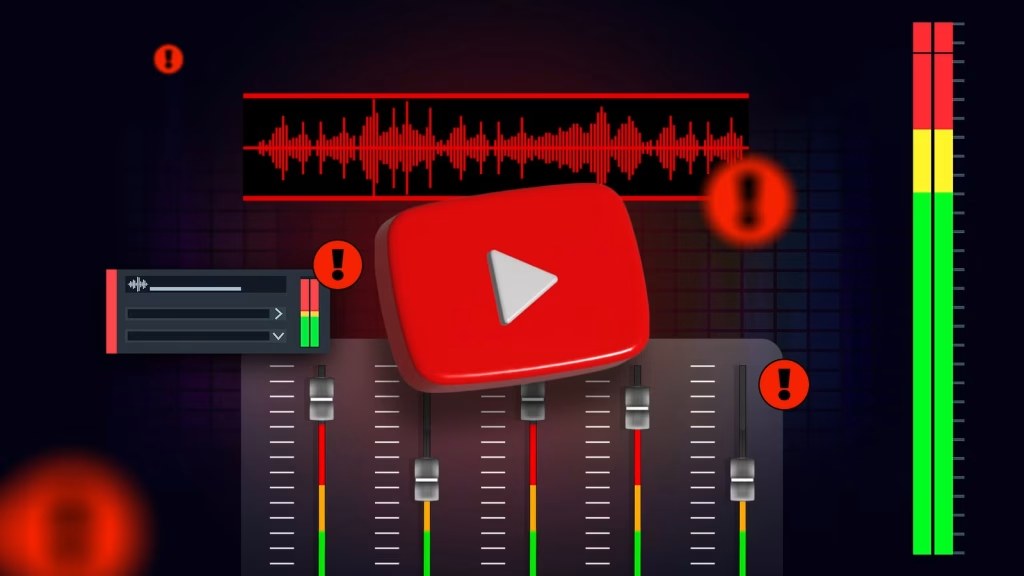I spend more time watching YouTube than any other streaming service, which is probably why I’m happy to fork out for YouTube Premium, but it also means I encounter some common annoyances among content creators too.
I’ve always said that poor image quality is always tolerable, but poor audio quality isn’t. Which makes it a shame that many popular YouTubers have great visuals, but less than optimal sound.
Despite having amazing lighting, lenses, and the best 4K cameras, audio in a YouTube video is often all over the places. Massive and harsh volume jumps from one moment to the next, inaudible dialog, and incorrect mixing of background music are just a few of the most common issues.
What good sound mixing actually means
Credit: Volodymyr Maksymchuk / Shutterstock.com
So, what does it mean to mix your audio correctly? If we look at professional audio production, it starts with recording your audio properly. At the most basic level this means positioning the mic correctly, ensuring the audio doesn’t clip while recording, and that the recording volume is adequate.
Then the audio engineer will mix each track as needed for the duration of the video, and most importantly make sure it’s all “mastered” for audio consumer gear. There are rules in broadcast audio mixing that prevent, for example, my poor ears suddenly being blown out while wearing headphones.
Now, supposedly YouTube does attempt some level of audio normalization, based on the various discussions among audio nerds I’ve read on the internet, but it’s inconsistently applied, often inadequate, and can hurt the quality of videos that need extreme adjustment. I can’t blame YouTube itself, because you can’t just apply a normalization pass to every video and expect the results to be great. This is why videos need audio mixing on an individual level.
Balanced dialog, consistent levels, and a controlled dynamic range are the backbone of professional-sounding audio. We’re not talking about mixing the audio for a movie or something here, but just fundamental audio that just does the job.
Audio engineers use LUFS or Loudness Units Relative at Full Scale as a measurement of average loudness over time and takes into account how we perceive sound, not just volume measured in decibels.
Based on what I’ve read, it seems that -14 LUFS is a good target for audio on modern audio gear, but perhaps its more important just to have some sort of target at all!
You don’t need to spend a bunch of money on studio monitors to assess a mix either. The person who has mixed YouTube videos for me in the past, for example, uses a simple set of over-ear reference headphones that isn’t tuned to be biased the way most consumer gear is. That gives you a good baseline to assess how loud things are relative to one another.
How poor mixing breaks the viewing experience
Credit: Anton Kor / Shutterstock.com
If you’re listening to someone speak in a video at a normal pleasant volume, and the next minute a musical sting or B-roll clip is blaring in your ears like a surprise airhorn, that’s probably going to make you click off that video.
If the audio sounds too compressed, or the EQ (equalization) is unbalanced, it creates fatigue in the listener. They’re distracted by the unnatural sound, or trying to parse what’s being said.
Perhaps most importantly, if the audio is all over the place within a video or across videos on your channel, it makes it come off as unpolished.
To demonstrate what I’m talking about, here are two of my own videos. This first one is one of the very first videos I ever posted to YouTube and the audio is rough. Part of that has to do with the quality of the recording and the room treatment, but the mix is no good.
Fast-forward a few years, and we’re doing a much better job, following many complaints about the audio mix being off-putting over the years. I’m not claiming that this sounds like a professional mix at all, but we did start paying close attention to relative and total loudness, and the improvement is undeniable.
How YouTubers can fix their audio (without becoming engineers)
So how can YouTubers give us better sound? For me, it boils down to a few key things:
Get monitors. A cheap set of studio monitor headphones will work just fine. I use a set of Sennheiser HD 280 Pros which are more than good enough for YouTube audio mixing.
Learn a workflow that leads to a balanced audio mix. For me, that’s optimal recording > noise removal > normalization > mix to target loudness. That’s an oversimplification, but the point is to have a standard workflow with a consistent result.
There are heaps of guides by actual professionals out there you can watch, and you do not have to become an audio engineer to make something that’s 80% of the way there. The target isn’t perfection, but just being good enough that your audio mix isn’t something your audience even thinks about.


